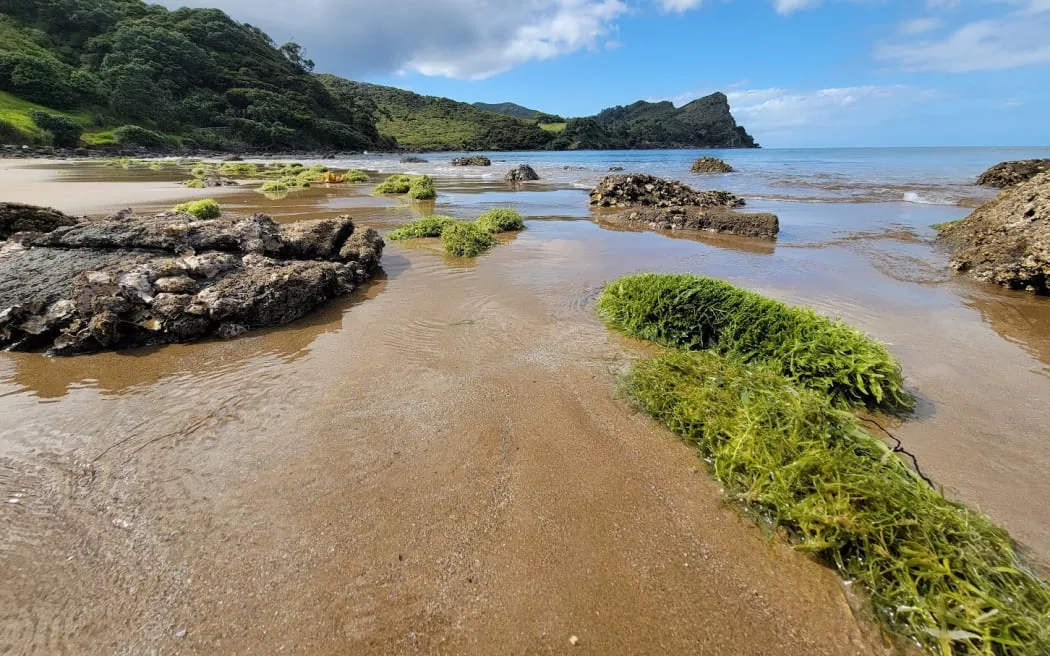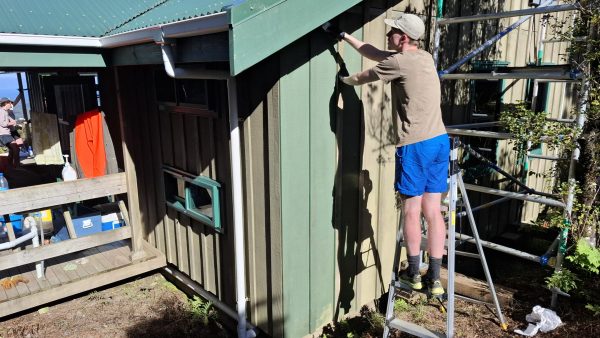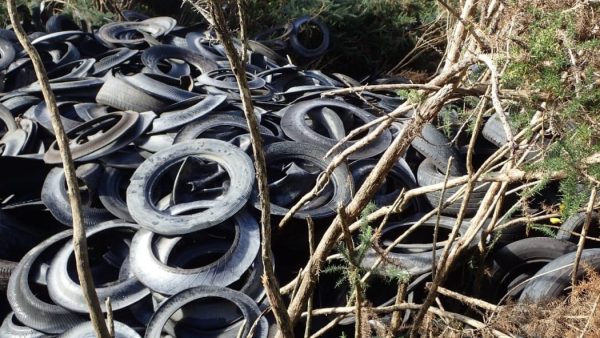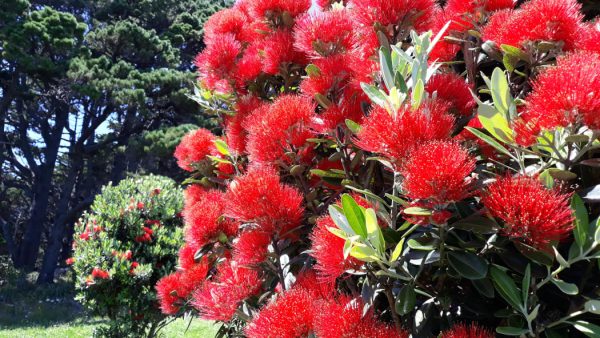New Zealand’s economy risks a $9.4 billion hit as the invasive seaweed caulerpa gains an increasing stronghold – with reports of it now spreading to the Bay of Islands tourist town of Russell.
That’s the stark warning after new NZIER analysis showed caulerpa’s spread will impact tourism and recreation, commercial fishing, aquaculture and ecosystems if more is not done to stop the spread.
The analysis is part of a New Zealand-first iwi, community and council consortium December business case to the government pushing for a co-ordinated, scaled up approach.
The heavyweight consortium wants up to $215 million – $43 million annually – for the first five years of a 30-year fight against caulerpa, which would be funded through taxpayer contributions, local rates and vessel levies.
But Biosecurity Minister Andrew Hoggard has challenged the $9.4 billion economic impact figure.
“The impacts of exotic caulerpa in New Zealand are still not fully understood and long-term studies are underway to understand this better.
“Given that we are still studying how caulerpa behaves and affects local marine ecology it would be extremely difficult to identify a cost with any certainty,” Hoggard said.
Hoggard would not comment on how much money the government would be putting towards caulerpa in the 22 May Budget.
“The government always faces difficult choices about what to fund and I cannot discuss Budget ahead of its release later this month,” Hoggard said.
Exotic caulerpa has been described by independent scientific experts as the country’s most serious marine biosecurity invasion in a lifetime.
Invasive exotic caulerpa seaweed now covers the equivalent of 2,425 rugby fields in more than 90 sites along the upper North Island’s coastline. Photo: LDR / NZ Herald
Northland-based Conquer Caulerpa Trust chair Verdon Kelliher said the situation was desperate and the government wasn’t doing enough to remedy the issue.
“We’re talking about major impacts,” Kelliher said.
“Without immediate, co-ordinated action, our fishing grounds, tourism industry and cultural heritage face unprecedented damage.”
The caulerpa threat area stretches 1500 kilometres of coastline from Cape Reinga to East Cape, including the ‘golden triangle’ economic powerhouse of Auckland, Waikato and Bay of Plenty, as well as Northland.
It has spread to more than 90 locations from the Bay of Islands to the Mercury Islands, off the upper Coromandel Peninsula.
Ex-Tropical Cyclone Tam washed more than 500 tonnes of caulerpa ashore in thick carpets in the Bay of Islands’ Omākiwi Cove and adjacent Whiorau Bay over Easter.
Local volunteers rushed to remove it due to fears of it creating a growth explosion.
The consortium wants a strengthened government approach to caulerpa with a stronger marine biosecurity framework to co-ordinate a scaled-up fight.
Great Barrier Island’s Tryphena was once a haven for boaties to anchor, before that was banned after New Zealand’s first discovery of exotic caulerpa on the island in 2021. Photo / Will Trafford / LDR / NZME
Its business case, by consultants Martin Jenkins and based on the NZIER economic analysis, was developed over four months by Hauraki Gulf-based Pou Rāhui iwi (Ngāti Pāoa, Ngāti Hei, Ngāti Tamaterā and Ngā Tai ki Tāmaki) with financial and/or other input also including from marine scientists and Northland Regional Council, Auckland Council, Waikato Regional Council, Thames-Coromandel District Council, Hauraki District Council, DOC plus affected industries.
Hoggard met Pou Rāhui iwi and councils behind the business case in March.
He said the meeting had been “very useful” and asked officials to consider the business case and provide advice to him “in due course”.
Pou Rāhui iwi spokesperson Herearoha Skipper said the cost of the government not taking appropriate action outweighed the cost of doing so.
“The arrival of caulerpa represents an unprecedented threat to our marine environment,” Skipper said.
“We are deeply concerned about the lack of a comprehensive approach to fighting this seaweed species and its potentially devastating impact.”
Pou Rāhui iwi spokesperson Herearoha Skipper. Photo: LDR
NZIER modelling suggested that without proper intervention, $9.4 billion of the upper North Island’s natural capital asset value could be lost over the next 30 years.
That includes an $8.8 billion recreational and tourism loss including recreational fishing – fish biomass has been halved in overseas caulerpa infestations.
Recreational boating would be impacted with significant movement restrictions, the report said.
There would be a $118 million loss for commercial fishing, $24 million for aquaculture and $489.4 million in ecosystem services degradation, NZIER said.
Huge carpet like caulerpa clumps washed up at Om`kiwi Cove by ex Tropical Cyclone Tam over Easter. Photo: Supplied / LDR
Roles and responsibilities in the caulerpa fight were not clear and regulatory barriers often prevented rapid responses. Traditional frameworks failed to adequately incorporate mātauranga Māori and invasive species funding had been reactive rather than proactive, the report said.
New Zealand’s first mainland exotic caulerpa infestation was identified in Omākiwi Cove in the eastern Bay of Islands in May 2023.
More than 1000ha – the equivalent of 1429 rugby fields – have been closed to boat anchoring since June 2023 to help stop its spread.
Sightings of caulerpa have now been reported outside this anchoring ban area including Russell’s Kororarēka Bay, about 10 kilometres by boat from Omākiwi Cove.
It’s also been reported at Long Beach (Oneroa) and Tāpeka Point.
“And it’s highly likely that additional beaches are affected but remain unreported,’ Kelliher said.
Hoggard said the caulerpa that had been shown globally to create dense monocultures were different species from those causing issues in New Zealand – where there was no clear evidence the marine pest was overgrowing seagrass.
Biosecurity New Zealand, mana whenua, regional councils, affected communities and other agencies had invested a huge amount of effort and money to tackle the situation, he said.
The government had put more than $20 million towards efforts to understand the pest, contain its spread and develop new technologies to remove it, Hoggard said.
World-leading technology was also helping to remove different types of caulerpa infestations including the development of a large-scale suction dredge in the Bay of Islands.











